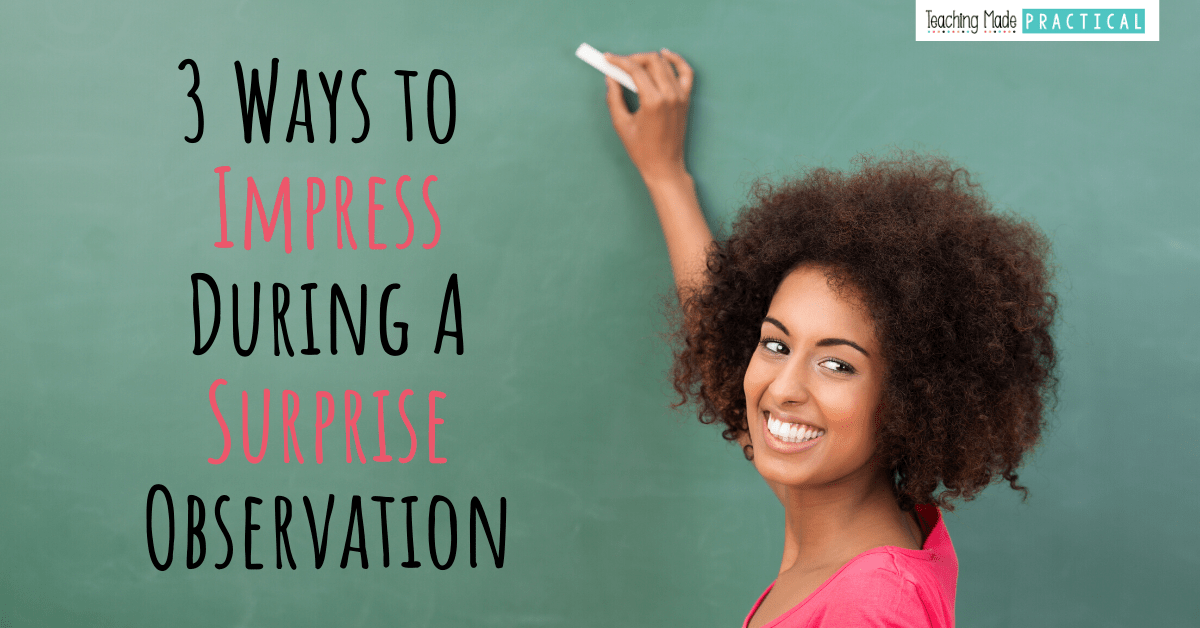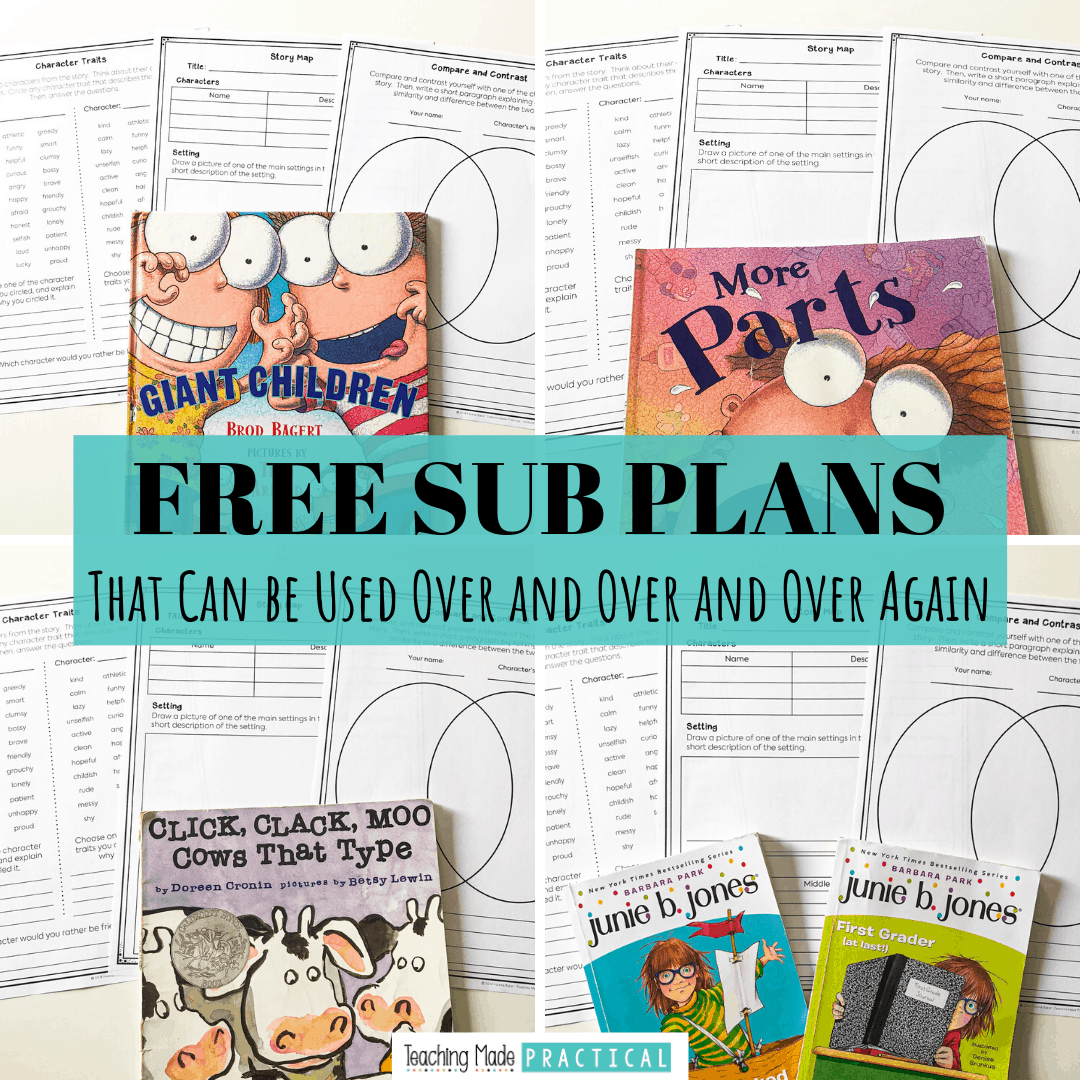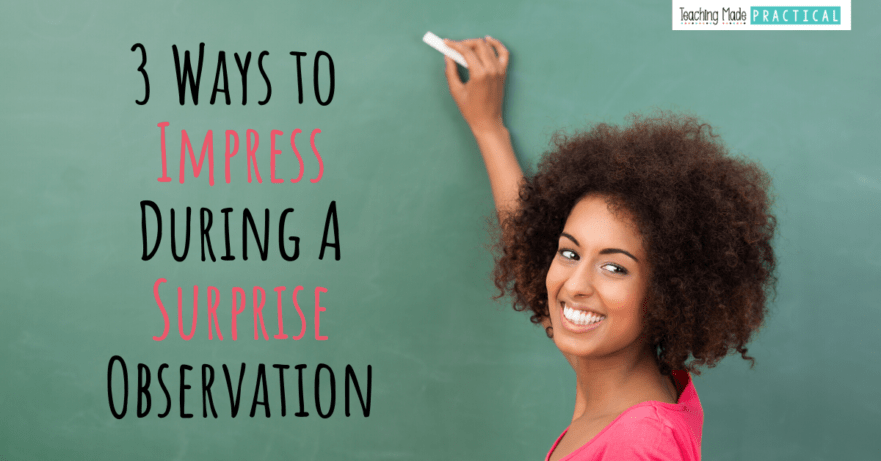
No matter how long you've been teaching, surprise teacher observations will always be a little nerve-racking. Having your teaching skills evaluated based on a 5 minute stretch of time in a room full of 3rd, 4th, and 5th graders who are constantly doing the unpredictable is stressful.
During a planned classroom observation, upper elementary teachers generally pull out all of the stops, making sure we have a hands-on, engaging activity planned. We hope that our administrator will walk in on similar activities whenever they do surprise walkthroughs.
But the reality is that sometimes principals walk in while students are working independently at their desks, or during a whole class lesson where the engaging activity you had planned is still 20 minutes away - and your principal will be long gone by then.
There have been so many times during a surprise teacher evaluation that I have wanted to say, "If you'll come back in 20 minutes you'll see an awesome lesson!"
Unfortunately, this is not an option.
Fortunately, there are some short, no prep activities that you integrate into almost any lesson that will impress your administration - even if they walk in at the most inopportune time.
These activities aren't just for teacher evaluations - they can be used anytime throughout the school year to increase student engagement. But since they require no prep ahead of time, they are great strategies to pull out during a surprise walkthrough.
Teacher Observation Tip #1: Find the Fib
If you've been reading my blog for a while, you've probably read about this activity. It's one of my favorites because it is fun, no prep, and can be integrated into almost any lesson. You can find out more about this activity and how to use it with any lesson here. Plus, get a free printable!
This is one of my favorite reusable activities, so I always had extra copies easily available. If you don't have copies when your principal walks in, students can complete this activity on notebook paper - or even on their whiteboards.
Administrators will like this for several reasons. It shows them that:
- You have activities planned that get students excited about writing.
- You encourage students to use higher order thinking in a fun way - it takes a lot of creativity and higher order thinking skills to come up with a plausible lie!
- You plan activities where students get to talk to and communicate with each other.
- You aim to have as many students as possible engaged at one time.
Take the classroom outdoors with these fun outdoor scavenger hunts that cover a variety of skills. The 8 scavenger hunts include:
- 5 senses scavenger hunt
- nouns and adjectives hunt
- math review
- living and nonliving
- syllable sort
- ...and more!
Get 8 scavenger hunts for $2.00 and enjoy some sunshine with your students!
Teacher Observation Tip #2: Partner Students Up and Ask a Higher Order Thinking Question
I regularly used a version of the Kagan Pair-Share in my classroom. You can read more about the advantages to this, and what to think about when setting up partner procedures here.
This isn't something that should be done for the first time when your principal walks in - this should be something you use regularly so that your students know exactly what to do. Then, when your principal walks in you can pull it out of your bag of tricks. It will show your administrator several positive thinks about you and your teaching. For example:
- You have established and practiced classroom procedures.
- You encourage your students to talk to each other in an academic, structured way.
- You plan times for your students to get up and move around in a way that doesn't interrupt class time.
- You aim to have as many students as possible engaged at one time.
- You ask higher order thinking questions.
This can work even if you are having students work independently at their desks (unless they are testing). Have students partner up with their worksheets in hand. You can have pairs compare one of the answers with their partner, or ask their partner for help on one of the questions.
Or, have them explain to each other what they thought the easiest/hardest question is and why. Show your principal that your 3rd, 4th, and 5th grade students are engaged in their learning even when it seems like they are just sitting at a desk working independently.
Teacher Observation Tip #3: Pull Out the Dry Erase Boards
This is something else that students did daily in my classroom. You can read more about why you should utilize dry erase markers and whiteboards in your classroom and how to set up procedures here.
If your principal walks in right after you complete a hands on activity (or 20 minutes before a planned activity), have students pull out their white boards.
One of the benefits of whiteboards is that they are empty slates, so you can easily use them no matter what subject you are teaching. Have students solve a math problem, or draw a picture to illustrate a vocabulary word, or fill in a T-Chart, or complete a sentence starter, or review a word study skill using your word wall, or answer a question or list facts and opinions. The possibilities are literally endless.
If you've created and taught procedures for using dry erase boards in your classroom, then your administration will like this for some of the same reasons as partnering up. It shows your administration that:
- You have established and practiced classroom procedures.
- You aim to have as many students as possible engaged at one time.
- You integrate writing into other subjects.
- You give students time to process information. Whiteboards are great for following the "I Do, We Do, You Do" model. If your principal walks in while you are doing "I Do" (which they don't usually like to see a lot of), have students pull out their whiteboards and switch to "We Do."
You can also combine this activity with the previously mentioned activity of partnering students up. Simply have students share their whiteboard answers with a partner.
Never Stress Over Sub Plans Again!

Make copies, find a fiction book, and you'll be ready for any emergency that comes your way!



Comments 9
I have a friend that told me that their boss will start doing surprise classroom observations. It is a really good idea to pull out the dry erase boards because it does engage every student. Having the students pair up is also a great idea for how it involves every student and makes them think.
thank you
Such great ideas. Thanks!!
I am looking forward to reading your blog.
Love this website!!
Love your resources and ideas! I would like to subscribe to your newsletter.
Author
So glad you like them! You can sign up here.
Hello, this is great information, but do you have any ideas for those of us that work in a preschool/pre-K classroom setting? As a paraprofessional I try to engage my little ones in different types of activities that incorporate the “learning through play” model but sometimes it can be quite difficult to accomplish a differentiated and “structured” lesson while fighting for their attention against manipulatives and toys. What strategies would you suggest for me and those who may have had the same problem?
Author
Hi Jamika! I’ve only taught upper elementary students, so I stick with ideas and activities for 3rd grade, 4th grade, and 5th grade students. You might want to check out Early Learning Ideas.